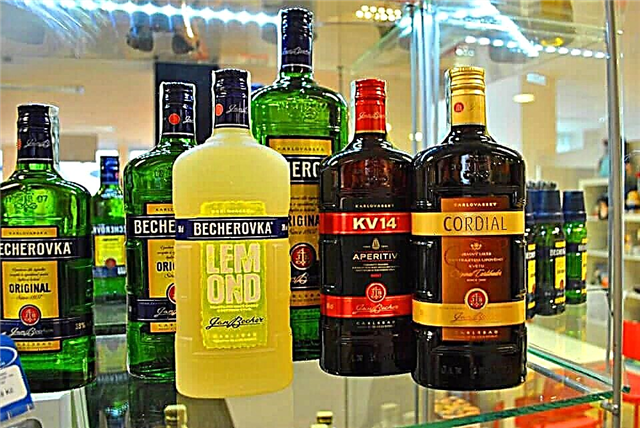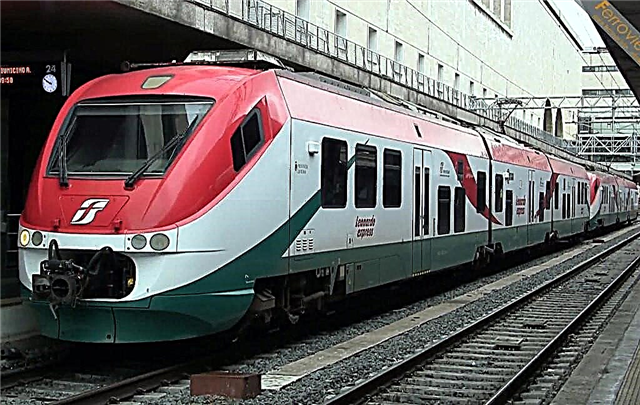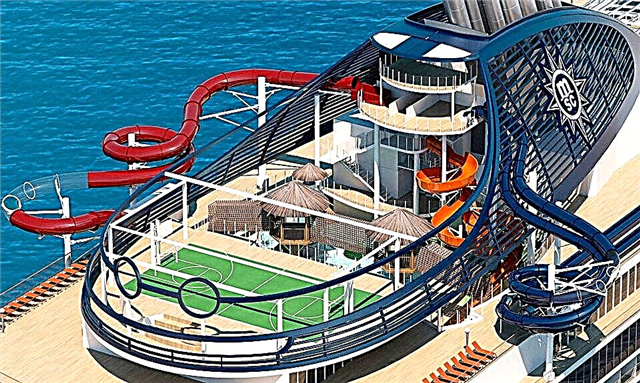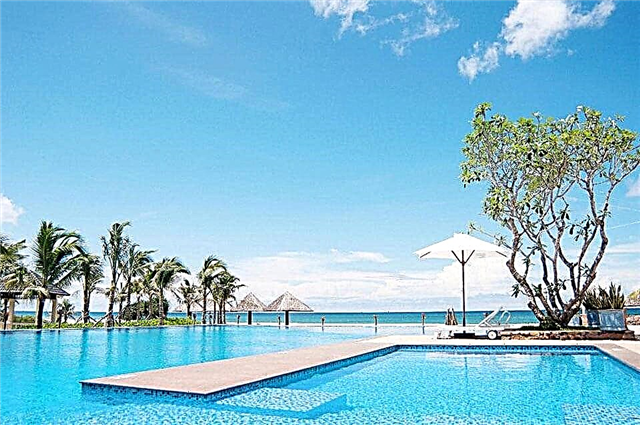The majestic architectural ensemble is located on the left bank of the Kazanka River, in the very heart of the city. Picturesque buildings are pleasing to the eye and reveal the pages of the history of Kazan. They are so valuable for the world cultural heritage that since 2000 they have been under the protection of UNESCO. The ancient walls, towers and temples of the Kremlin strive to see all tourists who first came to Kazan.
How the Kremlin was built
The high terrace on the left bank of the Volga and Kazanka was mastered by people even before the founding of Kazan. The most ancient finds that archaeologists managed to discover date back to the Mesolithic era. During excavations, researchers found fragments of a battle ax and shards of primitive dishes.

General view of the Kazan Kremlin
In the X-XI centuries, the wooden fortifications on the hill were called Kerman. The military-trading settlement of the Volga Bulgars occupied the northern part of the modern Kremlin. In the 13th century, the Kremlin became the center of the Kazan Khanate and became part of the powerful Golden Horde.
In the middle of the 16th century, after a long siege, the troops under the leadership of Ivan IV the Terrible conquered Kazan and annexed it to Russia. This is how the Christian faith and new traditions came to the Tatar land.

View of the Kazan Kremlin from the center of the Kazan family
As a result of prolonged fighting, the Kazan Kremlin was completely destroyed. The Russian tsar ordered to rebuild the conquered city anew. John IV the Terrible invited famous Pskov masters, and they began to erect stone walls and Orthodox churches on the hill. In the 17th century, architects from Moscow took part in the construction of the towers, so some buildings began to resemble Moscow Kremlin towers.
When the Russian Empire strengthened its borders, the Kremlin in Kazan ceased to play the role of a military fortress. With the formation of the Kazan province, a palace for the governor, Public places, a cadet school, a spiritual consistory and a bishop's house were built on its territory.

View of the Kazan Kremlin from Millennium Square
During the reign of Catherine II, urban planning reform took place in large Russian cities. The Kazan Kremlin was turned into the architectural heart of the city. Spacious squares appeared next to the stone towers, and wide radial streets were laid from the powerful walls to the outskirts of Kazan.
The Kazan Kremlin survived several major fires and the devastating Pugachev assault. Of the 13 towers built by Pskov craftsmen, eight have survived.

View of the South-West and Spasskaya towers of the Kazan Kremlin
In the year when Napoleon's troops invaded Russia, soldiers' barracks, artillery and provisions warehouses were set up in the Kremlin. There was also a factory where cannons were cast and repaired.
Under Soviet rule, several archaeological surveys were carried out in the Kremlin. The found artifacts added to the funds of museums, but not everything went well. Because of the anti-religious policy of the state, the churches and cathedrals of the Kremlin have suffered greatly.

Monument to the architect of the Kazan Kremlin
The most famous sights of the Kremlin
Today the architectural complex has the status of a museum-reserve. On an area of 13 hectares, there are ancient mosques, Orthodox churches, large museum collections and the residence of the head of the Republic of Tatarstan. Most of the historic buildings have been restored.
Tower Syuyumbike
Article: The Syuyumbike Tower is the most unusual building of the Kazan Kremlin

General view of the Syuyumbike tower
The "falling" lookout tower stands aside from the fortress walls. It was used not for the defense of the Kremlin, but as a watchtower. The tower offers a magnificent view of the surroundings - the streets of the city, the valleys of the Kazanka and Volga rivers.
The walls of Syuyumbike are built of bricks and mortar. Today, the 58 m high building tilts vertically by 2 m in a northeast direction. The unusual tower is considered an architectural symbol of the Tatar capital.
Spasskaya Tower
Article: Spasskaya Tower - a visiting card of the Kazan Kremlin

View of the Spasskaya Tower of the Kazan Kremlin from the 1st May Square
The old building is located in the eastern part of the fortress wall. Unlike its Moscow namesake, Spasskaya Tower in White Kazan. According to legend, it was placed where the Russian Tsar John IV the Terrible stuck the victory banner into the ground.
The old tower has been rebuilt several times since the 16th century. It has four tiers and stands on a powerful white-stone quadrangle with walls 2.5 m thick. The tall faceted tent is crowned with a large golden star. Tourists and residents of the city can enter the Kremlin through the gate.
Blagoveshchensky cathedral
Article: Annunciation Cathedral - noble simplicity of lines and shapes

View of the Annunciation Cathedral of the Kazan Kremlin
The oldest church building in the Kremlin is a five-domed church built in the traditions of Pskov architecture. Initially, its domes were helmet-shaped, but in the 18th century they were replaced by bulbous ones, and the central dome was redesigned in the Baroque style.
Five metropolitans and five archbishops are buried in the Annunciation Cathedral and the adjacent church. Services are held here on weekends and holidays. The rest of the time the church is open to tourists.
Kul Sharif Mosque
Article: Kul-Sharif Mosque - Muslim shrine of the Kazan Kremlin

View of the Kul Sharif mosque from Millennium Square
The main Muslim temple of Tatarstan is located in the western part of the Kremlin. Four minarets rise 58 m and are therefore visible from afar. Inside the huge mosque, 1.5 thousand believers can be accommodated, and another 10 thousand people can be accommodated in the adjacent square.
Compared to the towers and walls, the Kremlin mosque is very young. Kul Sharif appeared in 2005, to the 1000th anniversary of the city. Marble and granite for the temple were brought from the Urals, a huge crystal chandelier was made by craftsmen from the Czech Republic, and Kazan received luxurious carpets as a gift from the Iranian government.
Palace (Vvedenskaya) Church
Article: Palace Church - a legacy of Russian architecture of the 18th century

View of the Palace (Vvedenskaya) Church
An expressive 17th century temple is located in the northern part of the Kremlin. The palace church on the quadrangle ends with an onion dome on a high drum. Outwardly, it looks like a fortress, and the stepped architecture is in great harmony with the graceful Syuyumbike tower.
Kazan governors used to pray in the church. In the middle of the 19th century, a powder warehouse was arranged in the building. Today, there are museum expositions inside, which reveal the main milestones in the development of the statehood of Tatarstan.
Useful information for tourists

From left to right: Preobrazhenskaya and South-Western towers of the Kazan Kremlin
Through the arch in the Spasskaya Tower, the passage to the Kremlin is open both day and night. The entrance to the Taynitskaya Tower is open seasonally. During the cold season - from early October to late April from 8:00 to 18:00. From late spring to mid-autumn, when a lot of tourists come to Kazan, you can get to the territory from 8:00 to 22:00.
The museum and architectural complex of the Kazan Kremlin is the main treasury of the Tatar people. In addition to national relics, it houses rare exhibits of one of the largest museums in Russia - the State Hermitage.

South building of the Cannon Palace
The first collections from St. Petersburg were brought to Kazan in 1997. Today, the Hermitage-Kazan Center exhibits antique silver and gold household items, medieval weapons and armor, paintings, rare archaeological finds and modern historical installations.
The cathedral and mosque are open to visitors from 9:00 to 19:30. Museums are open any day except Monday.
You can freely walk around the Kremlin. Tickets to museums are sold at the box office - in the Spasskaya and Taynitskaya towers. For tourists who want to get acquainted with the Kremlin in detail and visit several museums, it is more profitable to buy a single ticket for 800 rubles.Entrance tickets to museums and exhibitions cost from 150 to 250 rubles. Preschoolers travel around the Kazan Kremlin free of charge.
Excursions

View of the Taynitskaya Tower from the territory of the Kazan Kremlin
A convenient way to get to know the Kremlin is to walk through its territory with an audio guide. Using the device without headphones costs 200 rubles, and with headphones - 250 rubles. An audio guide with two pairs of headphones will cost 300 rubles. They take a passport, driver's license or 2000 rubles as a deposit. The self-guided audio tour can be arranged from 8:30 am to 6:00 pm.
Every day, guided sightseeing and thematic excursions are organized around the Kremlin and the streets adjacent to it. Experienced guides introduce tourists to the history, the most famous sights of Kazan and the Kremlin, tell entertaining city legends and interesting facts.

View of the Kul-Sharif mosque from the Preobrazhenskaya tower
Group tours last about an hour and a half and cost 100 rubles on weekdays, and 110 rubles on weekends. The price for pensioners, school and university students is 70 rubles.
How to get there
Near the Kremlin there are exits from the Kremlevskaya metro station. If you are arriving by ground transport, get off at the stop "TSUM", "Palace of Sports" or "Central Stadium".
Attraction rating:











